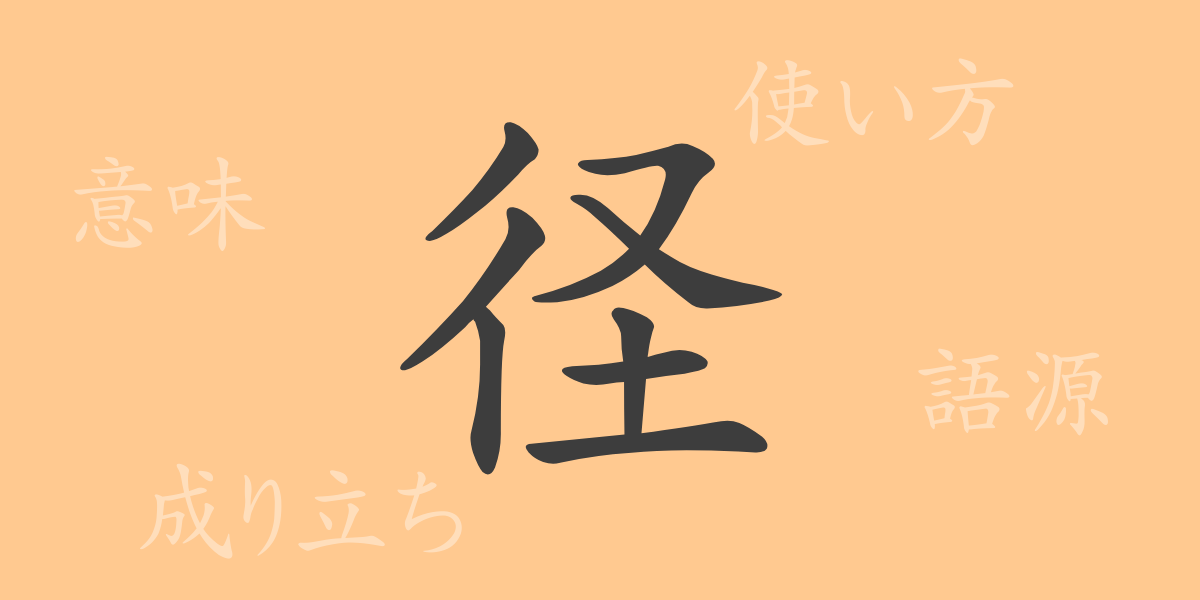The depth of meaning and history contained within a single kanji character epitomizes the richness of the Japanese language. The common kanji “径(けい)” is no exception, with its various meanings and usages derived from its form, deeply rooted in the daily lives of the Japanese people. This article explores the origins, meanings, usages, readings, and idioms or proverbs that include “径(けい)”. Let’s delve into the endless possibilities that a single kanji character can offer.
Origin of 径(けい) (Etymology)
The kanji “径(けい)” was used in ancient China to denote a path. It originally derived from pictograms representing footprints, eventually evolving to mean a direct path, hence “diameter.” Over time, the character also came to symbolize the center or core of a matter.
Meanings and Usages of 径(けい)
The kanji “径(けい)” primarily means “path” or “method,” and in mathematics, it refers to “diameter.” Figuratively, it can also indicate the essence or core of an issue. The term “径(けい)” is most commonly seen in the word “直径(ちょっけい),” meaning “diameter,” which is widely used in both everyday conversation and technical contexts.
Readings, Stroke Count, and Radical of 径(けい)
The kanji “径(けい)” has essential characteristics in its readings and structure within the written Japanese language.
- Readings: The on’yomi (Chinese reading) is “ケイ,” and the kun’yomi (Japanese reading) is “みち.”
- Stroke count: “径(けい)” consists of 8 strokes.
- Radical: The radical of “径(けい)” is “彳(しきがまえ),” which is associated with paths or ways.
Idioms, Expressions, and Proverbs Using 径(けい)
The kanji “径(けい)” is used in various idioms, expressions, and proverbs, each carrying unique meanings. For example, “一径に(いっけいに)” means “in one way” or “straightforwardly.” “径路(けいろ)” means “route” or “path,” while “迷径(めいけい)” refers to a “lost path,” and “探径(たんけい)” means “to explore a path.”
Conclusion on 径(けい)
As explored in this article, the kanji “径(けい)” holds meanings far beyond its literal representation. By understanding its origin, meanings, usages, and various idioms or proverbs, you can deepen your comprehension of the Japanese language. Utilize the rich expressiveness of “径(けい)” to achieve more precise communication.

























